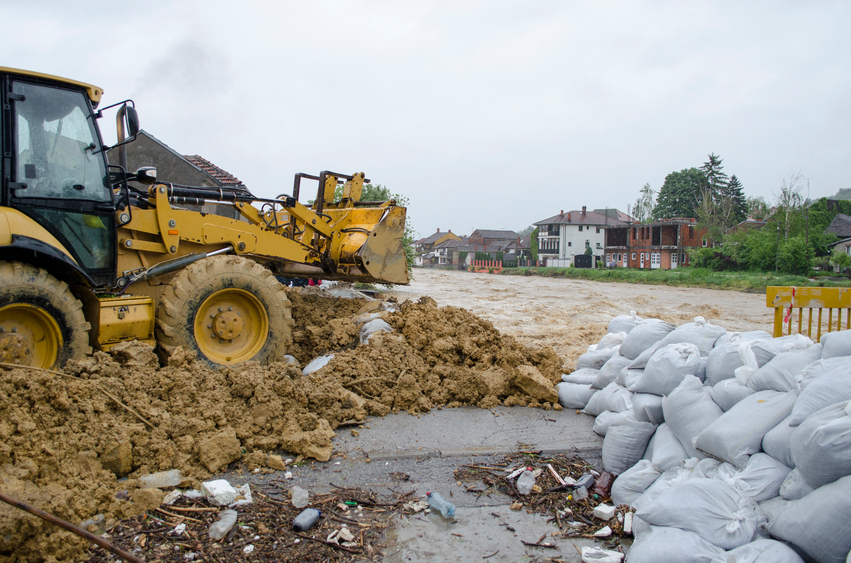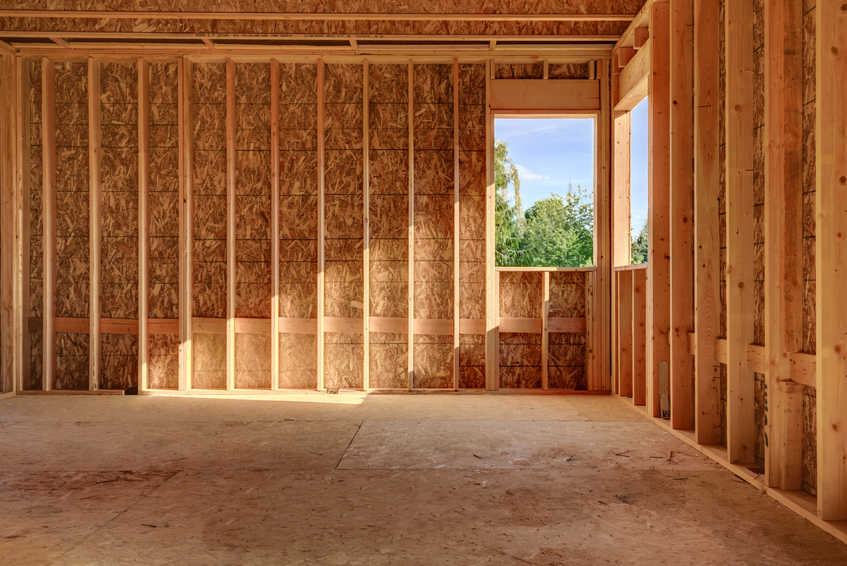Illinois Structural and Laws/Rules/Ethics/Sexual Harassment 30 PDH Discount Package 3
Courses in this Package
A Guide to Elevating Homes for Flood Protection (S04-015)
Guide for In-Place Treatment of Wood in Historic Covered and Modern Bridges (S04-020)
Installing Seismic Restraints for Electrical Equipment (S05-009)
Installing Seismic Restraints for Mechanical Equipment (S05-008)
Repair and Retrofit of Fatigue Cracks in Steel Bridges (S09-001)
Sexual Harassment Prevention for Illinois Professionals (IL1-001)
Engineering Laws, Rules, and Ethics for Illinois Professional Engineers (IL2-001)

This online engineering PDH course provides an overview of the methods necessary for elevating residential structures for flood protection.
One of the most common of all retrofitting techniques is to raise an entire existing superstructure above the design Flood elevation (DFE). When properly elevated, the living area is placed above all but the most severe floods.
Elevating the house offers long term advantages over wet and dry floodproofing. Since cleanup after the flood is often much easier and limited to areas outside of the living area, elevating the house is often simpler and more cost effective than wet and dry floodproofing. The information in this course could also be useful in projects where elevating the house is necessary, regardless of the reason for elevating.
This 4 PDH online course is intended for engineers, architects, contractors and planners who are with the planning and implementation of elevating residential structures for flood protection.
This PE continuing education course is intended to provide you with the following specific knowledge and skills:
- Understanding specific methods of elevating a residential structures for flood protection
- Knowing how to use the design flood elevation (DFE) in elevation design
- Learning about designing openings for intentional flooding of enclosed areas below the DFE
- Learning about elevating houses over crawlspace, basement, pier, pile and column foundations
- Learning about elevating Slab-on-Grade houses with and without raising the slab with the house
- Understanding how to elevate utilities of various types of houses
- Understanding how to construct new living areas (second story addition) over an existing foundation for a 1-story house
- Knowing how to evaluate changes to foundation and structural framing loads due to second story addition
- Knowing how to evaluate changes from increased wind loads due to increased height
In this professional engineering CEU course, you need to review the document titled, “A Guide to Elevating Homes for Flood Protection” which is based on the FEMA publication, Engineering Principles and Practices for Retrofitting Flood-Prone Residential Structures, Chapter 5E Elevation and a Case Study from Chapter 6 of the same.
Once you complete your course review, you need to take a multiple-choice quiz consisting of twenty five (25) questions to earn 5 PDH credits. The quiz will be based on this FEMA publication.
Upon successful completion of the quiz, print your Certificate of Completion instantly. (Note: if you are paying by check or money order, you will be able to print it after we receive your payment.) For your convenience, we will also email it to you. Please note that you can log in to your account at any time to access and print your Certificate of Completion.

This online engineering PDH course provides basic information on procedures for selecting and applying in-place treatments to bridges to prevent or arrest degradation, and discusses different approaches for minimizing damage caused by fire.
Wooden bridges have a long history of use throughout the world, and like bridges made of other materials, the service life of wooden bridges can be enhanced through proper construction, inspection, and maintenance. Wooden bridges, whether historic covered bridges or current highway timber bridges, can be vulnerable to damage from biodeterioration, fire or biodegradation. Biodeterioration is minimized through design and construction practices, and in the case of modern timber bridges, through pressure treatment of the timbers with wood preservatives. However, over time, many bridges need maintenance in order to prevent degradation and to minimize any damage caused by fire.
In order to maintain wood bridges, different methods, procedures and treatments are used. These include; in-place treatments, surface-applied liquid treatments, paste surface treatments, internal treatments, and fire retardants, all of which are discussed in this course.
This 4 PDH online course is mainly intended for structural engineers and others who are interested in learning more about the different methods of applying treatments to bridges and understanding the approaches for minimizing damage caused by fire.
This PE continuing education course is intended to provide you with the following specific knowledge and skills:
- Familiarizing with the causes and problem areas for biodegradation in wooden bridges, the effects of climate and the role of wood structure
- Learning about the different types of supplemental treatments including water-diffusible preservatives, non-diffusible liquid treatments and fumigants
- Gaining a general overview on the application and use of supplemental preservative treatments for covered bridges
- Understanding the use of supplemental fire-retardant treatments for covered bridges
- Exploring supplemental treatment concepts such as liquid surface treatments, paste surface treatments, and internal treatments
Upon successful completion of the quiz, print your Certificate of Completion instantly. (Note: if you are paying by check or money order, you will be able to print it after we receive your payment.) For your convenience, we will also email it to you. Please note that you can log in to your account at any time to access and print your Certificate of Completion.

This online engineering PDH course provides guidelines on how to attach Electrical equipment to a building to minimize earthquake damage. It presents examples of anchoring and using special devices called seismic restraint devices. These devices include vibration isolation systems, cable or strut suspension systems, roof attachment systems and steel shapes.
This 5 PDH online course is applicable to structural and electrical engineers, architects, contractors, building professionals, and other technical personnel dealing with the planning, design and installation of electrical equipment.
This PE continuing education course is intended to provide you with the following specific knowledge and skills:
- Identifying electrical equipment and selecting the appropriate method for its installation
- Familiarizing with the different types of attachments
- Familiarizing with the various types of anchors
- Learning the different methods of supporting control panels and attaching lighting fixtures
- Learning how to design housekeeping pads for seismic measures
In this professional engineering CEU course, you need to review the publication "Installing Seismic Restraints for Electrical Equipment" (FEMA 413), published by the Federal Emergency Management Agency.
Upon successful completion of the quiz, print your Certificate of Completion instantly. (Note: if you are paying by check or money order, you will be able to print it after we receive your payment.) For your convenience, we will also email it to you. Please note that you can log in to your account at any time to access and print your Certificate of Completion.

This online engineering PDH course provides guidelines on how to attach mechanical equipment to a building to minimize earthquake damage. It presents examples of anchoring and using special devices called seismic restraint devices. These devices include vibration isolation systems, cable or strut suspension systems, roof attachment systems and steel shapes.
This 5 PDH online course is applicable to structural and mechanical engineers, architects, contractors, building professionals, and other technical personnel dealing with the planning, design and installation of mechanical equipment.
This PE continuing education course is intended to provide you with the following specific knowledge and skills:
- Identifying mechanical equipment and selecting the appropriate method for its installation
- Familiarizing with the different types of attachments
- Familiarizing with the various types of anchors
- Understanding the different methods of supporting control panels
- Understanding the various methods of attaching HVAC equipment to residential structures
- Learning how to design housekeeping pads for seismic measures
In thisprofessional engineering CEU course, you need to review the publication "Installing Seismic Restraints for Mechanical Equipment" (FEMA 412), published by the Federal Emergency Management Agency.
Upon successful completion of the quiz, print your Certificate of Completion instantly. (Note: if you are paying by check or money order, you will be able to print it after we receive your payment.) For your convenience, we will also email it to you. Please note that you can log in to your account at any time to access and print your Certificate of Completion.

This online engineering PDH course delivers the best practices for repair and retrofit of fatigue cracks in steel bridges.
This course is also a guide for owners and consulting engineers to use for design and detailing of repairs and retrofits for fatigue cracks. It should be used in conjunction with existing specifications, codes, and engineering judgment. In addition to designing and executing the repairs and/or retrofits, there are numerous other steps involved in the inspection and assessment of a cracked bridge member.
When cracks are discovered in bridge elements (members or connections) in service, fatigue is usually the cause. Fatigue is the formation of a crack due to cyclic service loads. Fracture may be defined as rupture in tension or rapid extension of a crack, leading to gross deformation, loss of function or serviceability, or complete separation of the component. Periodic in-service inspection provides an opportunity to assure safety by detecting cracks before they grow to a critical size. The Federal Highway Administration has mandated a twenty-four month inspection interval for all highway bridges located on public roads which is intended to detect problems before they become critical to structural performance.
This 9 PDH online course is applicable to civil and structural engineers as well as consulting engineers who are interested in design and detailing of repairs and retrofits for fatigue cracks.
This PE continuing education course is intended to provide you with the following specific knowledge and skills:
- Familiarizing with the definition of fatigue and fracture in steel bridges
- Developing a fracture control plan and carrying inspections
- Selecting the proper repair and retrofit strategy
- Assessing fatigue effect using several approaches such as nominal stress approach, local stress approach, fracture mechanics approach, etc.
- Understanding the repair and retrofit methods such as surface treatments, impact treatments, etc.
- Identifying out of plane distortion due to secondary stresses
- Learning the repair methods specific to out-of-plane distortion such as: hole drilling, web gap softening, web gap stiffening, etc.
- Knowing the repair methods by loads induced fatigue
Upon successful completion of the quiz, print your Certificate of Completion instantly. (Note: if you are paying by check or money order, you will be able to print it after we receive your payment.) For your convenience, we will also email it to you. Please note that you can log in to your account at any time to access and print your Certificate of Completion.

This online PDH course presents a training on sexual harassment prevention in order to adopt and actively implement policies that ensure that workplaces are safe for employees to report and express their concerns about sexual harassment.
The Illinois Human Rights Act makes it a civil rights violation “[f]or any employer, employee, agent of any employer, employment agency or labor organization to engage in sexual harassment.” 775 ILCS 5/2-102(D).
The Illinois General Assembly finds that tolerance of sexual harassment has a detrimental influence in workplaces by creating a hostile environment for employees, reducing productivity, and increasing legal liability. Therefore, every employer in the State of Illinois is required to provide employees with sexual harassment prevention training that complies with section 2-109 of the Illinois Human Rights Act (“IHRA”).
This 1 PDH online course is applicable to professionals licensed in the State of Illinois and who are required to demonstrate continuing professional competency in sexual harassment prevention training as a condition of their license renewal.
This PE continuing education course is intended to provide you with the following specific knowledge and skills:
- Gaining an overview of sexual harassment prevention consistent with the Illinois Human Rights Act
- Familiarizing with types of unlawful sexual harassment, unwelcome behavior and working environment
- Learning about examples of conduct that may constitute unlawful sexual harassment
- Understanding sexual harassment in online environments
- Understanding employer responsibilities in the prevention, investigation, and corrective measures on sexual harassment
- Familiarizing with the Federal and State statutory laws concerning sexual harassment including remedies available to victims
Upon successful completion of the quiz, print your Certificate of Completion instantly. (Note: if you are paying by check or money order, you will be able to print it after we receive your payment.) For your convenience, we will also email it to you. Please note that you can log in to your account at any time to access and print your Certificate of Completion.

This online engineering PDH course presents the laws and rules of ethics and professional responsibility governing the practice of engineering in the State of Illinois.
Engineering ethics is (1) the study of moral issues and decisions confronting individuals and organizations involved in engineering and (2) the study of related questions about moral conduct, character, ideals and relationships of peoples and organizations involved in technological development (Martin and Schinzinger, Ethics in Engineering).
Excerpts from the Professional Engineering Practice Act of 1989, 225 ILCS 325 and the Illinois Administrative Code, Part 1380, which relate to the rules of profession conduct, continuing education requirements, proper use of seal and other pertinent regulatory provisions are presented in this course.
This 2 PDH online course is applicable to Professional Engineers licensed in the State of Illinois who are required to demonstrate continuing professional competency in the Illinois Laws, Rules and Ethics as a condition of license renewal. For each renewal period, every licensee must complete thirty (30) professional development hours, at least one (1) of the 30 hours must be in professional ethics and one (1) of the 30 hours must be in the laws and rules regulating the practice of engineering in the State of Illinois.
This PE continuing education course is intended to provide you with the following specific knowledge and skills:
- Familiarizing with the laws and rules regulating the practice of engineering in the State of Illinois
- Learning about engineering ethics, the rules of professional conduct and responsibility
- Understanding the role of the Illinois Board and its disciplinary authority
- Understanding the continuing education requirements in the State of Illinois
- Gaining an overview of disciplinary cases, violations and their corresponding penalties imposed by the Illinois Board
Upon successful completion of the quiz, print your Certificate of Completion instantly. (Note: if you are paying by check or money order, you will be able to print it after we receive your payment.) For your convenience, we will also email it to you. Please note that you can log in to your account at any time to access and print your Certificate of Completion.